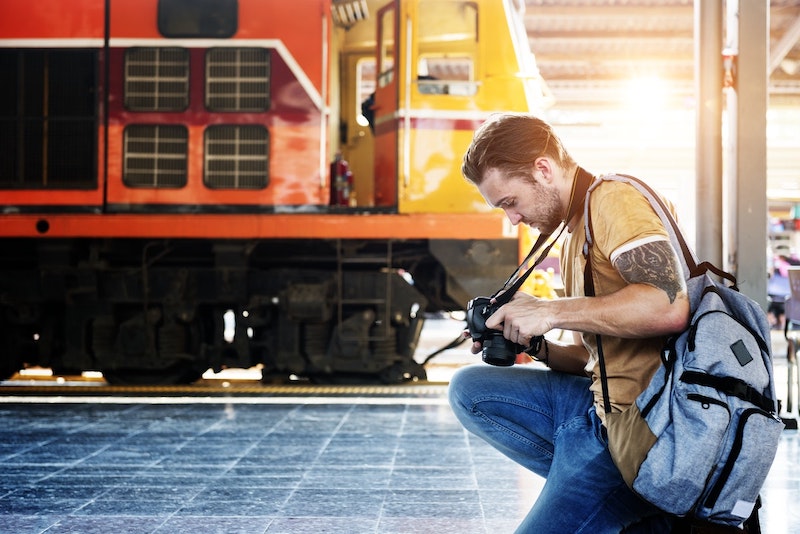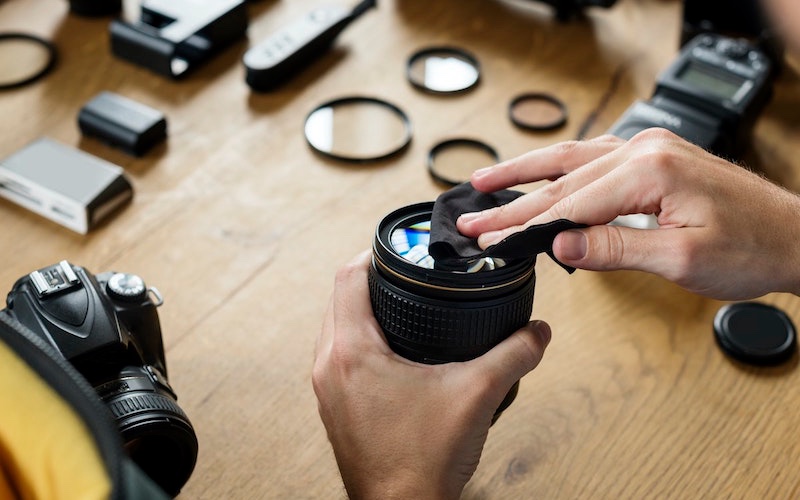

Learning to take great photos is about more than just learning to use your camera, although that’s an important part of it. If you want to improve your skills and learn the photography tricks of the masters, read on to find out our 20 easy tips:
1. Activate Aperture Priority Mode or “A” Setting
This helps you get professional-looking portrait shots even if the background isn’t focused. Using the “A” setting helps you control the depth of field. Keep in mind lower number settings actually offer wider apertures, decreasing the depth of field in a shot. The lower your setting the blurrier your background but the more focused your subject.
2. Use a Blend of Natural and Artificial Light When Shooting Night Shots
This tip is especially helpful if you are shooting cityscapes. Getting a great photo with the best lighting is also about timing. Using a spot meter reading helps you determine when natural light is at its peak and how to adjust artificial light to enhance the overall effect.
3. Utilize the Best Apps
Professional photographers have done just fine for years without apps, but now that there are tools available that can help you improve your photos, you might as well put them to work for you.
Apps are available to help you adjust and enhance your pictures, even if you are using your phone to take these pics. You might not get the same effect you would with a professional quality camera, but you’ll learn new photography tricks and be able to make the most of your phone’s camera feature.
4. Consider Using Burst Mode

You’ve probably experienced burst mode as a mistake, but you can actually use it intentionally and end up with some great shots. They are taken in quick succession and out of all the pics, one is likely to be a masterpiece.
5. Panorama Tricks
This is another trick for your phone’s camera. You can squeeze your subject into the frame more than once if you use a panorama shooting setting and are willing to run a little bit to make it into each of the photos your camera is snapping.
6. Alter the Direction and Angle of Your Panorama Shots
You can change the panning direction by tapping the arrow. This means it’s possible to get vertical panoramas, as well as the standard horizontal ones.
7. Photograph Jumpers
Ever wanted to take a picture of someone jumping but you weren’t sure how to capture the shot? Get low beneath your subject and use burst mode to capture each millisecond of the jump.
8. Take the Best Sunrise and Sunset Photos
Using an app that helps you find the best location and evaluate the position of the sun and moon means you’ll get the best possible pics at dawn and dusk.
9. Ignore Your Viewfinder
If you want the best candid shots, don’t pay any attention to your viewfinder. This is one of the easiest photography tricks you’ll ever use. You’ll want to snap a lot more shots when doing this, but you’ll save time and probably capture a ton of moments you never expected to.
10. Macro Filters are Your Friend

If a macro lens is out of your budget, a cheap macro filter can help you achieve the effect you want instead.
11. Golden Hour Backlit Photos are Optimal
If you know anything at all about photography, you know about Golden Hour. Use it to your advantage. You’ll get a soft, warm glow by using this diffused light from behind your subject.
12. Create a Relaxed Atmosphere for Candid Shot
If people are your subject and you want relaxed, candid photos, make sure you are exercising your conversational muscle. Get subjects talking and maybe even laughing to get the best results.
This is a trick that works especially well when photographing little kids, but it’s incredibly helpful with adults, too.
13. Take Overexposed Photos in Low Light Settings
Using the exposure compensation features on your camera allows you to overexpose the photo and get a better end result. Most DSLR’s allow negative three to positive three stops in third increments, so experiment and see what you can get.
14. Use an Exposure Reading from the Sky for a Great Silhouette Photo
Place your subject in front of your light source and turn off the flash on your camera. Set it to spot metering and point it toward the brightest part of the sky, but away from the direct sunlight. Then take an exposure reading. The picture you take based on the reading will be a perfectly lighted silhouette.
15. Photograph the Moon like a Pro

If you want a great pic of the moon or pictures set to moonlight, use the bulb mode on your camera. It’ll give you the longest exposure possible and improve your photos taken in mostly darkness.
16. Slow the Camera’s Shutter Speed and Use Neutral Density Filters for a “Dreamy” Effect
Using an ND filter gives you greater control of the image. You’re able to capture faster moving subjects and have the end result be calm and silky. This trick is great for photographing moving clouds or flowing water.
17. Reduce Shutter Speed and Pan to Give a Sense of Motion
If you are taking photos with the subject in motion, a low shutter speed – about two steps lower than needed – with panning will give you the effect you want.
18. Treat Your Equipment as You Would Anything You Love
You don’t need a lot of expensive equipment to take great photos. But whatever you do invest in, make sure you treat it with care.
19. Use Aperture Priority and Deep Depth of Field for Dramatic Architecture Photos
Shooting buildings? If you don’t have a tripod, set your camera to Aperture Priority and choose a smaller aperture. This gives you a deeper depth of field and makes the final picture of a building sharp.
20. Practice
It seems obvious, but the greatest trick to improving your photography skills is to practice them. All of the great photographers weren’t born that way. They had a great eye naturally, yes, but they also took time to learn their craft. You can too.

